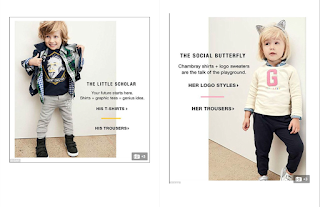Political Cartoon Analysis
Voting in the Midterms, a New Yorker daily bonus cartoon by Brendan Loper.
Loper, Brendan. "Voting in the Midterms." New Yorker, 5 Nov. 2018, www.newyorker.com/cartoons/daily-cartoon/bonus-voting-in-the-midterms. Accessed 6 Dec. 2018. Cartoon.
Loper, Brendan. "Voting in the Midterms." New Yorker, 5 Nov. 2018, www.newyorker.com/cartoons/daily-cartoon/bonus-voting-in-the-midterms. Accessed 6 Dec. 2018. Cartoon.
Ah, political cartoons. We see them in magazines, history books, newspapers, Instagram and Facebook posts. Wherever they appear, they present a commentary (which tends to be humourous, disturbing, or both) on some conemporary political issue. They make you laugh if you understand them, embarrassed if you don't. But even if we do recognize the events they portray, how much time do we take to actually understand them? To analyze and think about them?
Today I'm going to be talking about this New Yorker cartoon about voting in the midterm elections, taking the time to really break it down and analyze it.
The cartoon depicts an President Trump putting up an obstacle course in front of a voting booth. The obstacle course contains such obstacles as monkey bars over an alligator, a wall to vault lined with barbed wire, hoops of fire, tires to jump through, a tune to crawl through, and traffic cones to slow you down. The obstacle likely represents how difficult it can be to cast your vote in the midterm election, and argues that Trump has willfully built an obstacle course to block votes. Such details as the alligator could symbolize issues with late votes in florida, and the vaulting wall laced with barbed wire resembles a prison wall, perhaps symbolizing struggles faced by felons.
The style is colorful, with thin lines and attention to detail that give the cartoon a realistic quality. There’s depth to the cartoon, and it is tiered with the different scenarios, going from the beginning of the obstacle at the top (which says “enter”) to trump putting up traffic cones at the bottom. Red arrows lead between the different elements of the obstacle course. Color and realism makes the cartoon more interesting as the obstacle course is quite complete and lifelike. The effect of the obstacle course going down the page with guiding arrows helps to guide your eyes - first you look at the upper left of the page, where it says “enter,” and then your eyes are drawn along the obstacle course, and finally meet Trump. It is at this moment that you come to realize that he put up the obstacle course, giving the cartoon a punchline of sorts.
The artist heavily relies on symbolism in this piece, as the obstacle course that Trump is putting up is clearly a reference to the metaphorical obstacle course preventing people from getting their votes in. The obstacle course metaphor might be exaggerated, although some would argue that it is not. The sign at the beginning of the obstacle course is labelled “enter” and the voting booth behind Trump is labelled “vote.” Allusion is also heavily present in this piece, as it may refer to issues some states had with casting votes, such as Florida (several groups filed a lawsuit after several thousand votes mailed before election day were not counted). It could also be more generally in reference to minorities who encounter obstacles when trying to get a vote in, such as naturalized immigrants and felons. The use of symbolism makes you think more critically about the process of casting a vote and perhaps to feel angry that some votes were not counted because of complications or elements of the ‘obstacle course.’ The result of the viewer beginning to look at the cartoon at the “enter” sign and ending on the “vote” sign is that they look at the obstacle course before the voting booth, causing the association of voting with obstacles. The effect of allusion is that it either prompts you to read up on the obstacles some face when voting or confirms preconceived notions of there being unnecessary obstacles.
To understand the message iterated in this piece, the reader must be aware of the voting process and preferably also have some awareness of the fact that certain groups have faced obstacles getting their votes in or having their votes recognized. With this prior knowledge, we can infer from this cartoon that the cartoonist believes that the government (or specifically, Trump) attempted to limit votes in the midterm elections. This is significant as some news sources claimed that fewer votes would be less harmful to Trump than many votes in this midterm. The message of the cartoon is, similarly, that Trump has created an obstacle course that has made it harder to vote.
While some of us might have been lucky enough to mail our ballots in, this cartoon demonstrates that there are many groups who have much harder time getting their votes recognized, whether because of their state as immigrants, the timing that their ballots were sent in, or other factors.
Many other political cartoons offer similarly significant commentaries. As I hope my little note has made clear, you can get a lot out of thinking critically about and analyzing the political cartoons you come across in day-to-day life. I hope you will also begin to look more carefully at these little pieces of art - they might just lend insights into important political issues and events.



Comments
Post a Comment